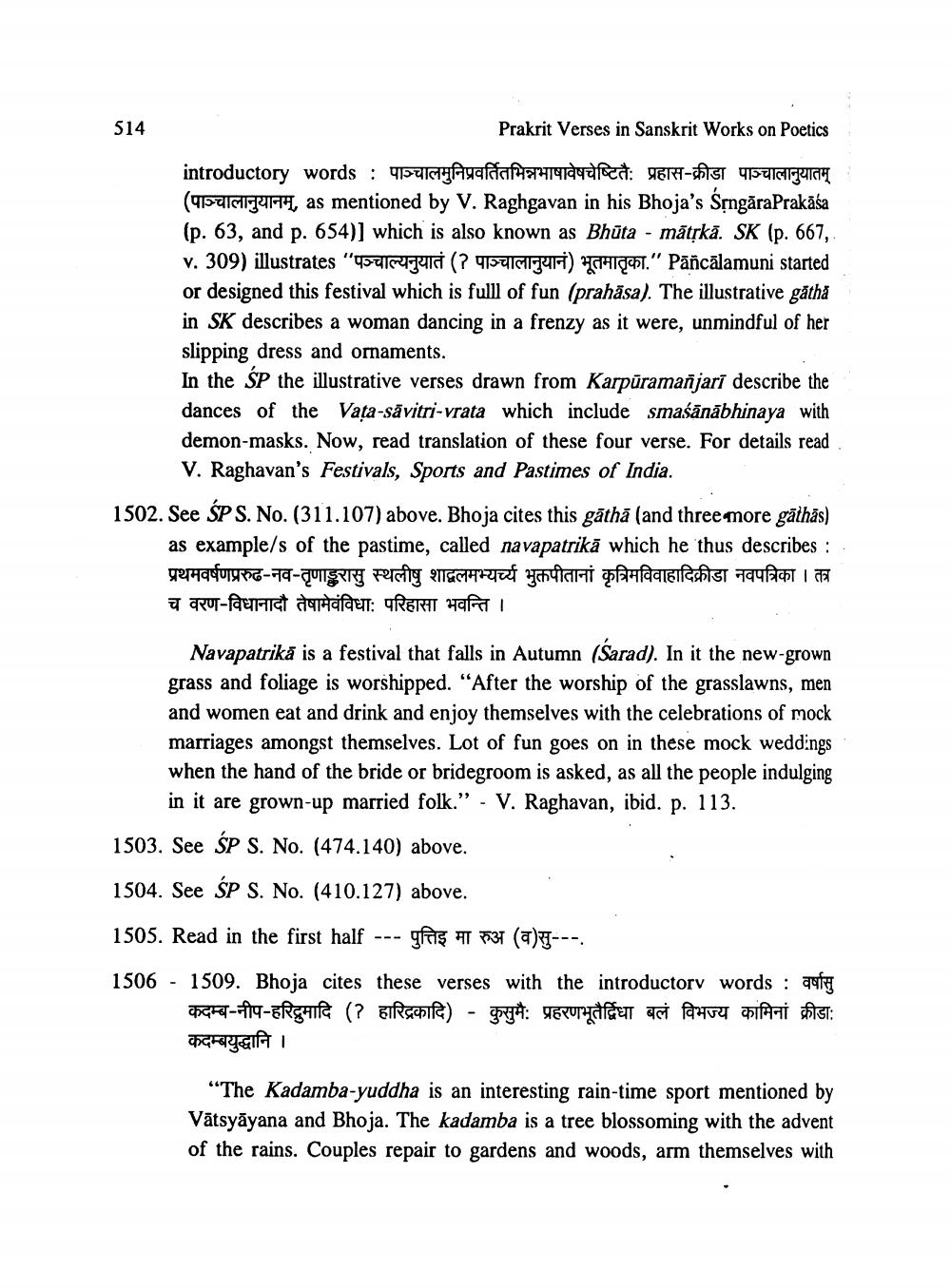________________
514
Prakrit Verses in Sanskrit Works on Poetics
introductory words: 9alcuyafahaTh191dea: Eri-IGT qullage (9571MARTH, as mentioned by V. Raghgavan in his Bhoja's SmgāraPrakāśa (p. 63, and p. 654)] which is also known as Bhūta - mātņkā. SK (p. 667, v. 309) illustrates "Walaugud (? UMPUF) Ich." Pāñcālamuni started or designed this festival which is fulll of fun (prahāsa). The illustrative gātha in SK describes a woman dancing in a frenzy as it were, unmindful of her slipping dress and ornaments. In the SP the illustrative verses drawn from Karpūramañjarī describe the dances of the Vata-săvitri-vrata which include smaśānābhinaya with demon-masks. Now, read translation of these four verse. For details read V. Raghavan's Festivals, Sports and Pastimes of India.
1502. See ŚP S. No. (311.107) above. Bhoja cites this gāthā (and three more gāthās)
as example/s of the pastime, called navapatrikā which he thus describes : प्रथमवर्षणप्ररुढ-नव-तृणाकुरासु स्थलीषु शावलमभ्यर्च्य भुक्तपीतानां कृत्रिमविवाहादिक्रीडा नवपत्रिका । तत्र च वरण-विधानादौ तेषामेवंविधा: परिहासा भवन्ति ।
Navapatrikā is a festival that falls in Autumn (Sarad). In it the new-grown grass and foliage is worshipped. "After the worship of the grasslawns, men and women eat and drink and enjoy themselves with the celebrations of mock marriages amongst themselves. Lot of fun goes on in these mock weddings when the hand of the bride or bridegroom is asked, as all the people indulging
in it are grown-up married folk.” - V. Raghavan, ibid. p. 113. 1503. See ŚP S. No. (474.140) above. 1504. See ŚP S. No. (410.127) above. 1505. Read in the first half --- gfors HT 1337 (7)T---,
1506 - 1509. Bhoja cites these verses with the introductory words : aurel
OGR-94-ERGHI (? Erschla) - guy: yeuruar i Party Imai AST: कदम्बयुद्धानि ।
"The Kadamba-yuddha is an interesting rain-time sport mentioned by Vātsyāyana and Bhoja. The kadamba is a tree blossoming with the advent of the rains. Couples repair to gardens and woods, arm themselves with




